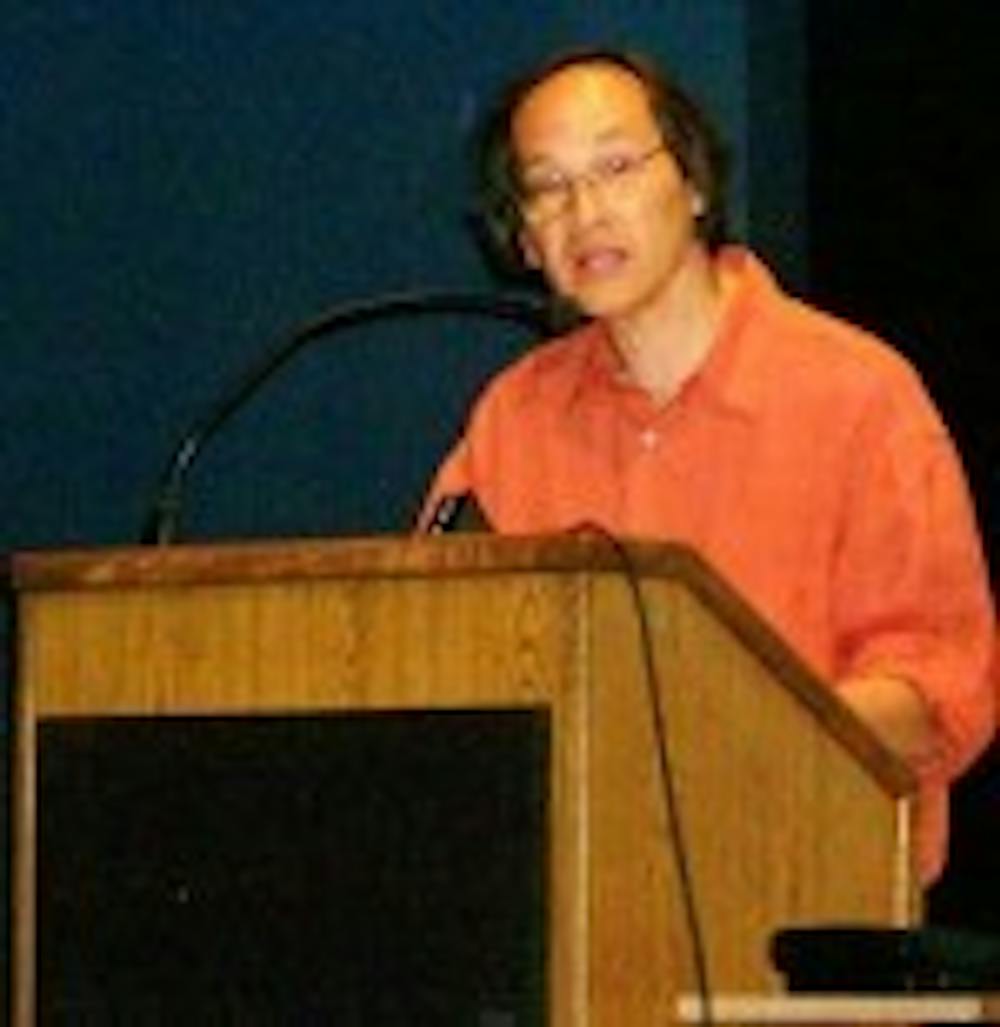Chinese poetry took center stage last Wednesday at the Center for the Arts as Arthur Sze, an award-winning poet, read from his collection and most recent publications to jump start a weekly poetry and writing lecture series.
A finalist for the 1999 Lenore Marshall Poetry Prize, the recipient of the Lannan Literary Award for Poetry, three Witter Bynner Foundation Poetry Fellowships, and two Creative Writing Fellowships from the National Endowment for the Arts, Sze shared the colors and imagery of the Chinese language with students.
Part of the "Wednesday @ 4 Plus" series, organized by the UB poetics program, the lecture kicked off the weekly series of prominent poets and writers. Sze, currently a professor directing the creative writing program at the Institute of American Indian Arts in Santa Fe, is the author of recent books such as "The Redshifting Web" and "The Silk Dragon."
Giving a pre-reading talk Tuesday afternoon, Sze lectured on uncovering the art of translating Chinese poetry. He read many of his famous poems, including "Streamers" from his book, "Archipelago," and also "The Great White Shark" and "Before Sunrise" from his more recent book, "The Red Shifting Web."
During his reading of "Before Sunrise," a poem in which he writes of bright colors clashing, Sze exemplified his talent for making thoughts more visual:
"The myriad unfolds from a progression of strokes one, ice, corpse, hair, jade, tiger/Unlocking a gate along a barbed wire fence, I notice beer cans and branches in the acequia."
After the reading, the audience seemed dazzled by this use of striking colors and vivid imagery in Sze's work.
"Wonderful," said Molly Dubansky, a freshman with a dual major in theater and psychology. "I love his use of language. The colors he used were so bold."
Dubansky's comments were echoed by Lyviv Goldfarb, a freshman math major.
"The colors and imagery were so bright, especially the description of the flowers." said Goldfarb.
"I found out about the event through class and was interested," said Kasia Keeley, a freshman art major. "I did learn a lot about Chinese poetry and I really enjoyed it."
Sze explained that his poetry is inspired by many sources and that he tries to bring different disciplines of art together.
"I get my inspiration from life, from people, from nature, anything." said Sze. "I bring in different art as it is all interrelated. In the rest of art, they try to separate off each other. I try to bring art together."
Sze believes that in his contribution to Chinese poetry, he is following a long heritage of exemplary poets.
"Chinese poetry is a great tradition of visionary poets using language, writing fabulous experiences," Sze said. "Any poetry puts you in touch with nature and the infinite."
Translating ancient Chinese text to English is another contribution Sze brings to Chinese poetry. Sze feels that by translating Chinese poetry, he maintains the essence of the works while making it more accessible to the world.
"I translate Chinese poems into English. It is a way of tradition by bringing power back to these poems," said Sze. "I think the poems have a lot of strength, although they were written a long time ago."





